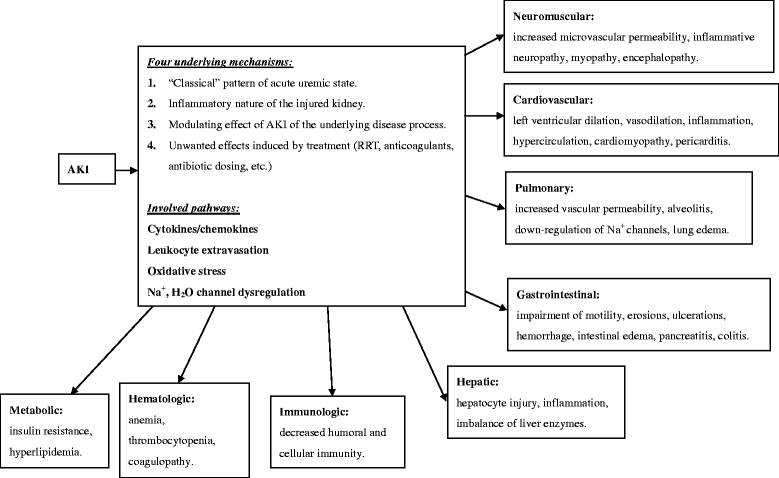Long-term remote organ consequences following acute kidney injury
- PMID: 26707802
- PMCID: PMC4699348
- DOI: 10.1186/s13054-015-1149-5
Long-term remote organ consequences following acute kidney injury
Abstract
Acute kidney injury (AKI) has been a global health epidemic problem with soaring incidence, increased long-term risks for multiple comorbidities and mortality, as well as elevated medical costs. Despite the improvement of patient outcomes following the advancements in preventive and therapeutic strategies, the mortality rates among critically ill patients with AKI remain as high as 40-60 %. The distant organ injury, a direct consequence of deleterious systemic effects, following AKI is an important explanation for this phenomenon. To date, most evidence of remote organ injury in AKI is obtained from animal models. Whereas the observations in humans are from a limited number of participants in a relatively short follow-up period, or just focusing on the cytokine levels rather than clinical solid outcomes. The remote organ injury is caused with four underlying mechanisms: (1) "classical" pattern of acute uremic state; (2) inflammatory nature of the injured kidneys; (3) modulating effect of AKI of the underlying disease process; and (4) healthcare dilemma. While cytokines/chemokines, leukocyte extravasation, oxidative stress, and certain channel dysregulation are the pathways involving in the remote organ damage. In the current review, we summarized the data from experimental studies to clinical outcome studies in the field of organ crosstalk following AKI. Further, the long-term consequences of distant organ-system, including liver, heart, brain, lung, gut, bone, immune system, and malignancy following AKI with temporary dialysis were reviewed and discussed.
Figures
References
MeSH terms
LinkOut - more resources
Full Text Sources
Other Literature Sources
Medical


